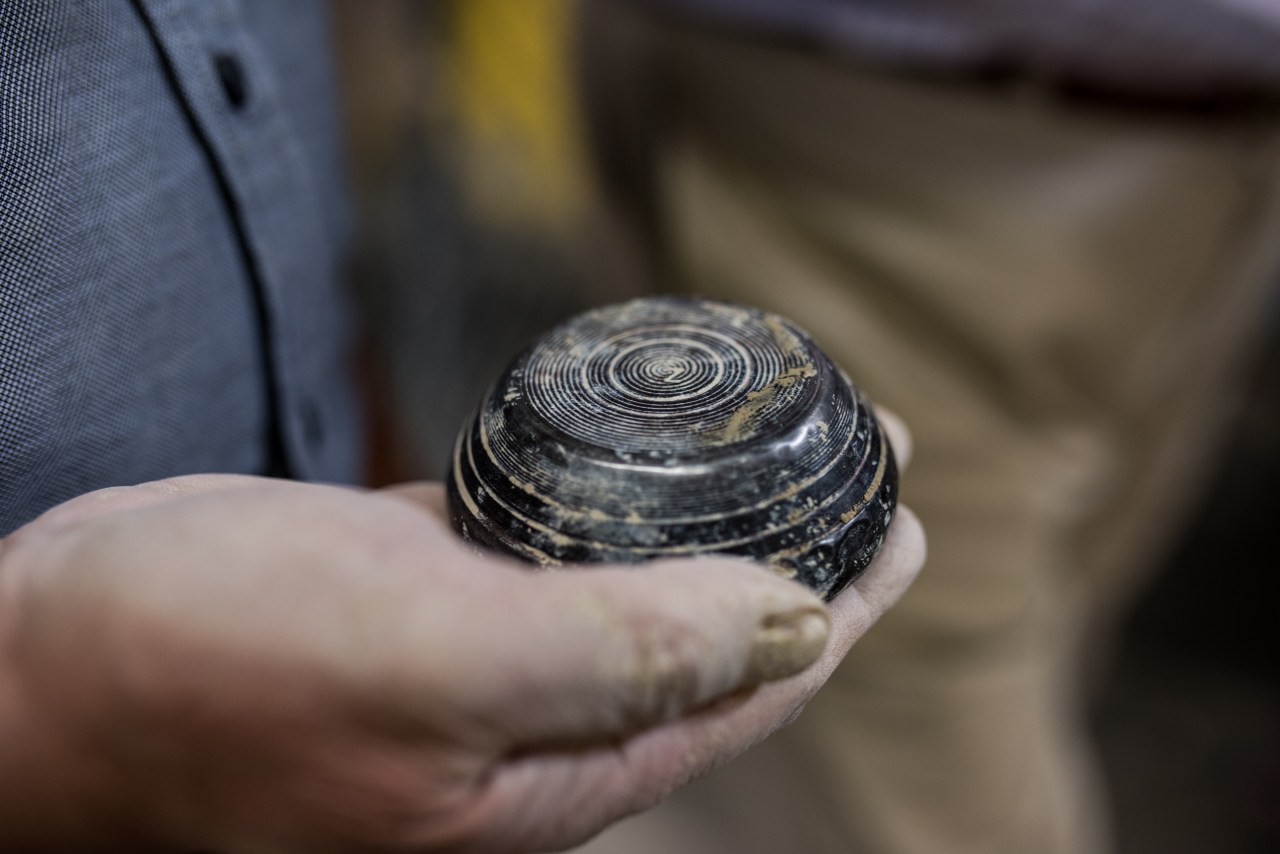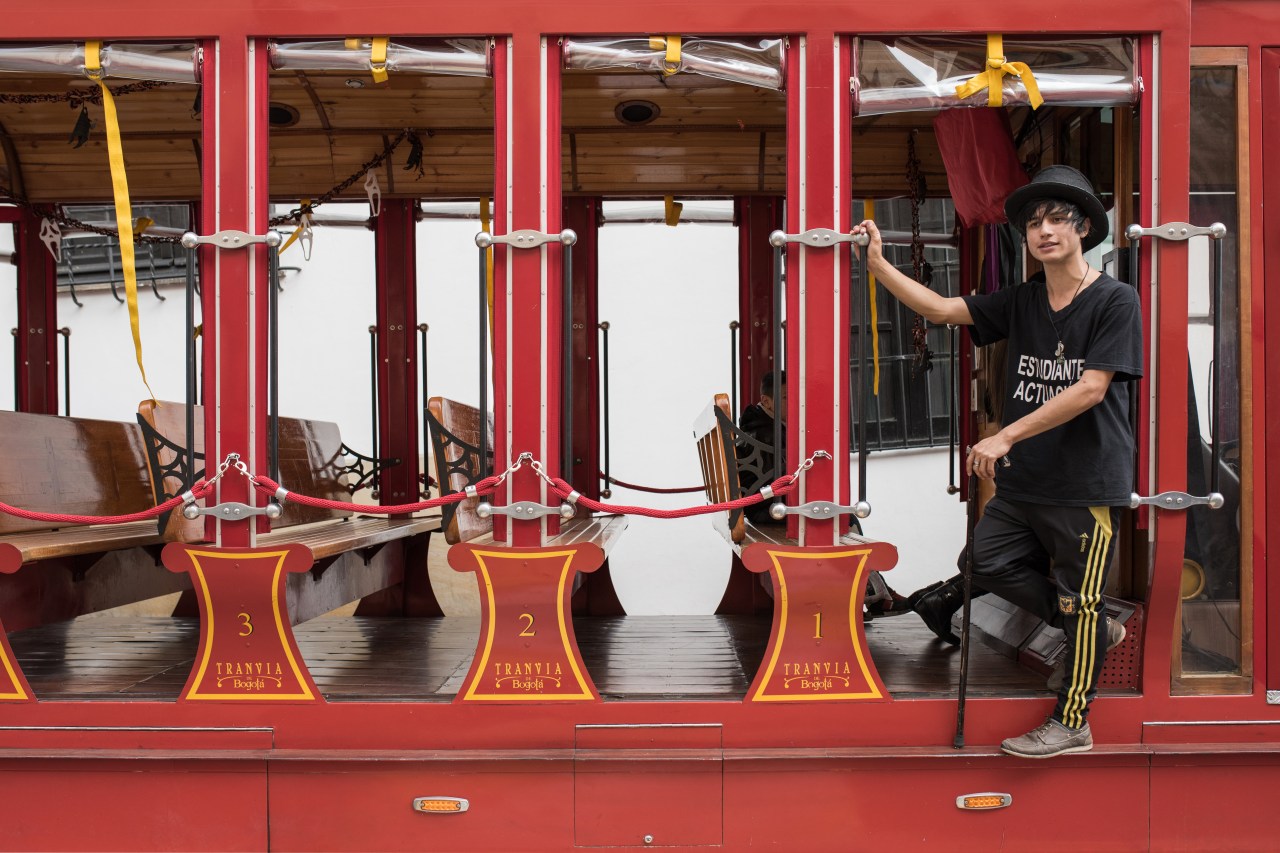1. Bring a jacket. Weather in Colombia is not seasonal. It’s so close to the equator that every day is pretty much the same, and the weather is determined by altitude: the higher you go, the colder it gets. At 8,612 feet, Bogotá—which other Colombians like to call the Fridge—has mild daytime weather year-round, but it gets cool at night (around 48 degrees Fahrenheit). As a born-and-bred Bogotá native, whenever I’m back in the city I shift to jacket mode even when it’s sunny because the temperature can drop unexpectedly. Don’t make the tourist mistake of walking around in flip-flops.
2. Orient yourself with the mountains. Bogotá is flanked by mountain ranges to its west and east. You can see one of them, the Eastern Andes, from most places in the city, so they’re a good way to orient yourself. Most Bogotanos use these mountains as a reference point, which is why most maps of the city have east at the top instead of north. It’s also why in Bogotá, subir (“go up”) means “to go east” and bajar (“go down”) means “to go west.”
3. Find your ajiaco. A formidable soup made with chicken, no fewer than three kinds of potatoes, corn, and a local herb called guascas, ajiaco is Colombia’s national dish. What else goes in it is a matter of personal—or familial—preference. Some might add capers, cream, avocado, or rice, while others might regard those ingredients as nothing short of sacrilegious. I’m in the pro-cream and avocado camp, but you do you. Explore your options; get a taste of ajiaco at La Puerta Falsa, at La Pola in Las Aguas, or at Las Cazuelas de la Abuela in Chapinero.
4. Beware aguardiente. Colombians will be relentless in offering you shots of the national firewater—a spirit made from distilled sugar cane and aniseed—at social gatherings. You’ll come off as impolite if you turn them down, and they will keep insisting anyway. Most brands contain a lot of sugar, taste like boozy liquorice, and will give you a nasty hangover. If at all possible, stick with the sin azúcar version.
5. Brace yourself for altitude sickness. Bogotá is not as high up as La Paz or Quito, but it’s above the “soroche” (altitude sickness) line. Some people hardly feel it, but others need a day or so to acclimatize to the thinner air and will feel dizzy, tired, and short of breath. Local remedies include black coffee and aguapanela (brown, unprocessed sugar melted into boiled water).
6. Learn the grid. A Bogotá street address has numbers, not names (Carrera 8 No. 7-26 or Calle 72 No. 10-34) which seems confusing at first, but is actually quite simple. Bogotá’s streets are laid out in a (somewhat messy) grid pattern, mostly made up of calles and carreras. Carreras, similar to avenues, run north-south with their numbers ascending from east to west; calles run perpendicular to carreras east-west, with their numbers ascending from south to north. Addresses have three parts: Carrera 8 No. 7-26, the address of the presidential palace, means it’s on Carrera 8, 26 meters (85 feet) north of Calle 7. But be warned that many streets curve or end abruptly, and there are also diagonal streets in the mix, which can make navigating tough for visitors.
7. Hit the bakeries. My favorite thing about Colombian food is the baked goods. Pandebonos (cheese bread), pan de yuca (bread made from cassava dough), and almojábanas (cheese-flavored rolls) are just a few ways we have improved upon bread rolls. You can get these in any bakery, where you can also sit and enjoy them with some coffee or hot chocolate. Perhaps the best place to try them is in Bogotá’s oldest restaurant, La Puerta Falsa, in the downtown neighborhood of La Candelaria, but my personal favorite is La Rioja in Chapinero.

8. Know your food zones. Bogotá has been trying to market itself as a culinary destination, creating a few gastronomic zones for fine dining. (The “Zonas” are just branded names for certain sections of some neighborhoods, like “the Strip” in Las Vegas.) The city gets together with business owners from these areas to promote the areas and direct tourism there. There is “Zona C” in downtown La Candelaria, La Macarena near downtown, “Zona G” and “Zona T” in Chapinero, and Usaquén in the north. Some of my favorite places are Zatar for Lebanese food, El Carrito Sanguchero for Peruvian street food, and Mini-Mal for contemporary Colombian. (People will probably recommend Andrés Carne de Res, a car ride away in the nearby town of Chía; its kitschy decor is interesting, but the food is overpriced and the service is terrible. Skip it.)
9. Drink at the grocery store. Many neighborhood grocery stores (tiendas) have tables where you can hang out and drink beer. A bottle of beer (a pola in Bogotá slang) should cost around 3,000 pesos ($1), and many tiendas also have snacks, like deep-fried empanadas. Head downtown to Doña Ceci, which has a jukebox and is popular with students from the nearby colleges. I like Del Quindío in Chapinero for their great empanadas.
10. Don’t be a carrot. Back in the 90s, the city decided that late-night partying was causing too much trouble, noise, and violence, so beginning in 1995, bars and discos had to close at 1 a.m. This became known as hora zanahoria or “carrot hour,” zanahorio/a being slang for someone strait-laced or square. Closing time was extended to 3 a.m. in 2002, and to 5 a.m. in 2014, but many clubs still close at 3. Also, most late-night venues are closed from Sunday to Wednesday, and most places, including restaurants, close on Sundays at 8 p.m.
11. Watch where you wander. Bogotá is divided into six socio-economic strata, with the highest-income neighborhoods (4-6) subsidizing utilities for the poorest (1-3). This system makes it easier for people with lower incomes to find affordable housing, but it also keeps the city rigidly stratified. The poorer areas receive less protection from the police and have far less private security. As a result, people perceive these neighborhoods as more dangerous and will warn you to avoid them, although most places in the city are pretty safe—except at night. After dark, avoid empty streets, particularly downtown, if you don’t know where you’re going. You might drift into one of the city’s “tolerance zones”—where prostitution is legal—which can be dangerous late at night.
12. Don’t say no to a cafecito. The stereotype in Colombia is that rolos (as Bogotanos are sometimes known) are cold and unfriendly. Bogotanos may be more reserved and politely formal than people from the rest of the country, but they’re still pretty darn friendly, and once you befriend a rolo, we’ll buy you drinks, have you over for a home-cooked dinner, or invite you to stay with us. And we won’t do it to be polite; we’ll really mean it. People will often invite you to have a cafecito, or a coffee and a chat, when you’re in their home. Declining is rude unless you have a good reason to leave.

13. Mix beer and explosives. Tejo, Colombia’s national sport, evolved from an indigenous game of hurling gold discs. In its contemporary form, players lob a steel puck at small packets of gunpowder to get them to explode. Tejo teams spend hours in purpose-built arenas trying to set off more explosions than their opponents do. (Often, the losing team must buy the winning team a crate of beer.) It’s considered a working-class pastime, and it’s popular all over central Colombia. In Bogotá, you can try your hand at Club de Tejo la 76 in Barrios Unidos or Campo de Tejo Los Búcaros in Santa Fe.
14. Cool off with a refajo. Colombia’s version of the beer-and-soda beverage is called a refajo, and it works best with a Colombian blond beer (such as Águila or Póker) and a brand of soda called Colombiana (which markets itself in English as champagne-flavored soda). Some variations use red, fruit-flavored sodas such as Kola Hipinto, Kola Román, or Kola Sol instead. All taste great on a warm day.
15. Don’t count on public transport. Since the 1950s, every city administration—including the current one—has promised to develop Bogotá’s first subway system. In the meantime, we have a bus rapid transit system called TransMilenio. It doesn’t cover the whole city, and it’s pretty much impossible to use during rush hour. As a result, almost everyone who can afford to drives their own car, which causes horrific traffic jams. Other options for getting around—taxis, Uber, and regular buses—will also get stuck in the city’s substantial rush hours (7-9 a.m. and 5-8 p.m.). If you’re not going far, rent a bike instead; Bogotá has 270 miles of dedicated bike lanes (“ciclorrutas”), but be warned that you might have to share these with oblivious pedestrians and street vendors. On Sundays and public holidays, over 62 miles of roads in Bogotá go car-free from 7 a.m. to 2 p.m. for “Ciclovía,” when walkers, runners, cyclists, rollerbladers—and aerobics classes—take over.

16. Learn the taxi rules. Taxis are cheap, but Bogotanos regard taxi drivers as public enemy number one because of their abysmal safety records and reckless driving. Don’t hail a cab on the street: it’s not unheard of for drivers to take unsuspecting passengers on a “paseo millionario” (millionaire’s ride) by chauffeuring them to an ATM at gunpoint. It’s better to call one, or use apps such as Tappsi and EasyTaxi. These apps allow you to tip the drivers, which will make them more likely to come pick you up. Also, the phone lines and apps will tell you your taxi’s license number, so you can travel more safely and make a complaint if something goes wrong.
17. If you must take an Uber, sit up front. Uber is active in Bogotá, but it operates in a legal grey area: the app is legal, but the government banned the service after Uber refused to register as a formal company in Colombia. (It’s still around, and remains hugely popular in Bogotá.) Because they’re not subject to the same regulations, Uber drivers are not popular with taxi drivers, and the police might even stop you and fine your driver for doing an Uber pick-up. So sit in the front seat so it doesn’t look as obvious.
18. Get out of town for fritanga. Many Bogotanos like to leave the city on weekends to get some fresh air and grab a bite. Around the city there are lots of asaderos: barbecue restaurants that serve fritanga, an assortment of grilled meats and vegetables. If you head east from Bogotá towards La Calera, you can stop at one of the many restaurants on the steep road out of town for fritanga with a sweeping view of Bogotá.
Originally published on Roads & Kingdoms on November 9, 2016.